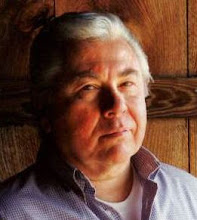skip to main |
skip to sidebar
"Why Maaco?" Some might be asking that question and this is the simple answer....no other shop would take on the restoration work. I can assure you that this was definitely not a $200 special!
Although the body did not have any rusted-through (body rot) areas other than the tailgate there were trim holes that I wanted filled with weld and many small dents. Mike R, the owner of the Maaco Shop in Albany, NY came to my house to appraise the work needed and decided that he would take the job if I was not in a rush. I wasn't.
 Body shop owners would rather replace a panel or a door, paint it and move onto the next job. It's quick and makes money quickly. Working body panels with hammers and dollies, smoothing and shrinking steel takes a lot of time and experience.
Body shop owners would rather replace a panel or a door, paint it and move onto the next job. It's quick and makes money quickly. Working body panels with hammers and dollies, smoothing and shrinking steel takes a lot of time and experience.
Mike employed an oldtimer, Patrick, who had experience working with the soft steel common to 1960's vehicles. He could work on the truck between other jobs. Patrick told me whenever I visited the shop how much he enjoyed working on the truck!
Over the next two years Patrick worked on the truck and put about 200 hours into it. Mike charged $45 per hour. That came out to about $9,000 just for the labor. Add in the cost of materials and paint and the cost was well over my original budget.

Photo above....Mike is straightening the equalizer bar bracket that was damaged in the shop. Notice how the bed has been covered and masked to protect the spray-in Rhinolining. Work was needed to correct the problem of the tailgate rubbing on the edge of the bed. That is the reason for the primer.
The truck was delivered back to me and if you have been following this blog you will remember that I had it up on jackstands for quite some time in my garage. I removed the axles and springs over a period of a few months and had opportunities to closely inspect the bodywork. There were a few problems that needed to be addressed.

Photo above.... The holes for the F-O-R-D letters were mistakingly filled in by Patrick. I spent hours measuring and marking the locations to drill new holes. I miscalculated! I drilled the holes exactly 1/2 inch too low and that mistake had to be fixed. In the future I will grind the studs off the letters and use adhesive to mount them.
Below is the original factory seam on the left A-pillar shown with a crack that was painted over. The green arrows point to the crack.

Under the paint is the factory seam. Apparently, after it was repaired, it cracked again before it was painted.
 The fix was to weld a panel onto the backside. Hopefully, that will fix the problem permanently.
The fix was to weld a panel onto the backside. Hopefully, that will fix the problem permanently.

The same problem developed with the right side A-Pillar and the same fix was employed.


 The two photos below show paint cracks that are actually hiding a much deeper problem. The joint between the two pieces of steel was very weak and had to be reinforced by welding a piece of steel to the panels from the backside.
The two photos below show paint cracks that are actually hiding a much deeper problem. The joint between the two pieces of steel was very weak and had to be reinforced by welding a piece of steel to the panels from the backside.

 The photo below shows the repaired seam.
The photo below shows the repaired seam.
 The left rear corner did not have the same problem as the right side did. The flexible seam sealer did what it was supposed to do. It flexed which caused the paint to crack. It is a problem that I will have to live with.
The left rear corner did not have the same problem as the right side did. The flexible seam sealer did what it was supposed to do. It flexed which caused the paint to crack. It is a problem that I will have to live with.
 The entire exterior and cab interior was scuffed to accept the new paint. It will be painted with the same color, 2006-7 Chevrolet Corvette, Monterey Red Metallic Tintcoat (80U), which is a three stage color. After the base coat is applied, a colored clearcoat is applied before the the final clearcoat.
The entire exterior and cab interior was scuffed to accept the new paint. It will be painted with the same color, 2006-7 Chevrolet Corvette, Monterey Red Metallic Tintcoat (80U), which is a three stage color. After the base coat is applied, a colored clearcoat is applied before the the final clearcoat.
I am supposed to get the truck back within a couple weeks. Yippee!
As always, you can see larger versions of these photos at my Flickr page. Just be sure to hit the "Back" button on your favorite browser to return to this blog.
Email me: Ron B.

 I soaked them in warm water for a few minutes to soften the material and used thin strips of wood cut to the size of the defroster outlets and placed them into the slots as the cardboard dried. Perfect!
I soaked them in warm water for a few minutes to soften the material and used thin strips of wood cut to the size of the defroster outlets and placed them into the slots as the cardboard dried. Perfect!



































